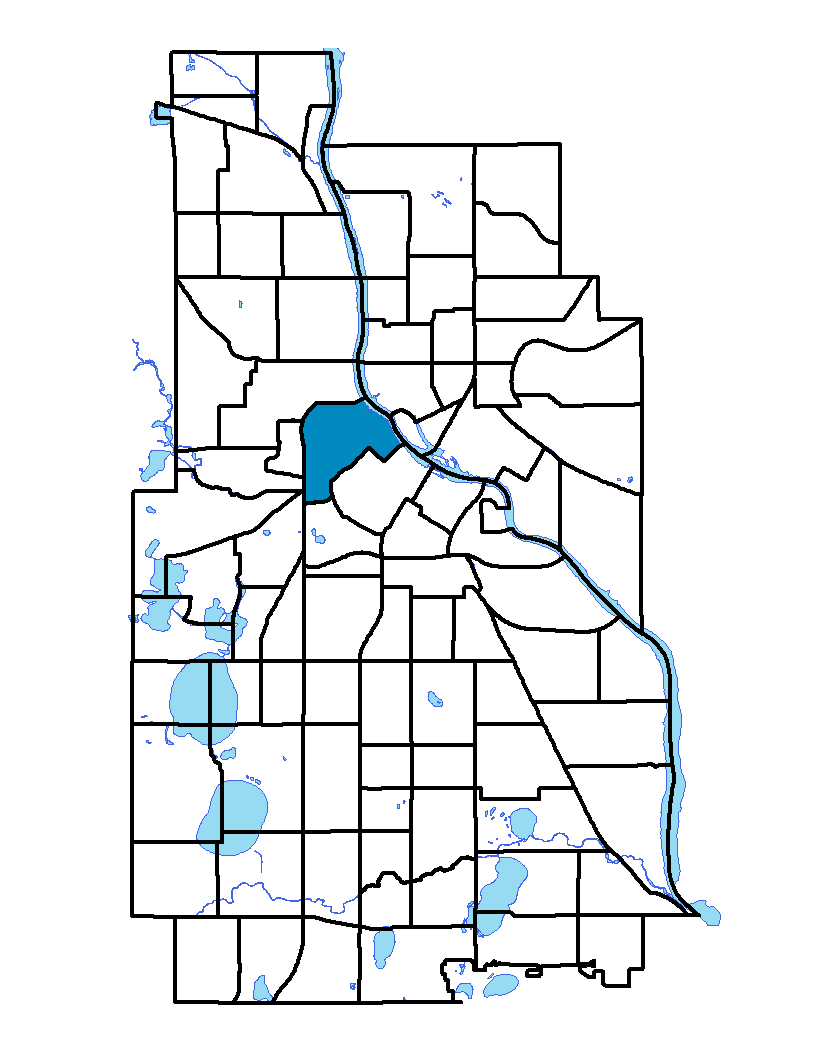North Loop neighborhood makes the northern part of the loop that encircles Minneapolis' downtown. The neighborhood extends from Plymouth Avenue on the north to Interstate 394, which makes the southern boundary. The western boundary is Interstate 94. The boundary continues along 12th Street North to Third Avenue North, then to Washington Avenue, and Hennepin Avenue. The Mississippi River is the northeastern boundary. The neighborhood grew very fast in the last few years, as industrial buildings and old warehouses were converted for residential and commercial uses. This transformation was followed by new residential construction. The North Loop, which used to be industrial land, is now a vibrant residential neighborhood, very conveniently located near the downtown core.
To learn more about the neighborhood association visit: www.northloop.org
Indicator Details
|
Indicators |
Primary Domain | Indicator Value | Rank | Tier |
|---|---|---|---|---|
| Access to Mainstream Financial Services | Economic Health | -% | - | Data N/A |
| Access to Parks and Open Space | Natural Areas | 3.3% | 57 | Middle |
| Adult Educational Attainment | Educational Opportunities | 96.4% | 21 | Top |
| Age of Housing | Housing | 35.1% | 3 | Top |
| Blood Lead Levels in Children | Housing | 5.8% | 58 | Middle |
| Business Retention | Economic Health | -3.6% | 80 | Bottom |
| Chronic School Absence | Health Systems and Public Safety | -% | - | Data N/A |
| Commute Mode Share | Transportation | 35.0% | 28 | Top |
| Employment Rate | Employment Opportunities | 82.2% | 1 | Top |
| Excessive Housing Cost Burden | Housing | 19.5% | 10 | Top |
| Food Desert | Neighborhood Characteristics | -% | - | Data N/A |
| High School Graduation Rate | Educational Opportunities | -% | - | Data N/A |
| Household Transportation Costs | Transportation | 14.5% | 16 | Top |
| Local Business Vitality | Economic Health | 49.5% | 60 | Bottom |
| Long-Term Unemployment | Employment Opportunities | 5.5% | 45 | Middle |
| Low Birth Weight | Health Systems and Public Safety | 4.6% | 19 | Top |
| Motor Vehicle Collisions | Health Systems and Public Safety | 45.1 | 79 | Bottom |
| Offsite Alcohol Outlets | Neighborhood Characteristics | 1 | 6 | Top |
| Pedestrian Connectivity | Transportation | 214.4 | 9 | Top |
| Preschool Enrollment | Educational Opportunities | 52.4% | 40 | Middle |
| Preventable Hospitalizations | Health Systems and Public Safety | 12.4 | 78 | Bottom |
| Proximity to Brownfield Sites | Environmental Hazards | 34.0% | 82 | Bottom |
| Proximity to Superfund Sites | Environmental Hazards | 22.3% | 44 | Middle |
| Public Assisted Households | Employment Opportunities | 2.8% | 6 | Top |
| Reading Proficiency | Educational Opportunities | -% | - | Data N/A |
| Residential Mobility | Social Cohesion | 63.1% | 77 | Bottom |
| Residential Proximity to Traffic | Environmental Hazards | 33.0% | 75 | Bottom |
| School Proximity to Traffic | Environmental Hazards | 0.0% | 1 | Top |
| School Readiness Scores | Educational Opportunities | -% | - | Data N/A |
| Toxic Releases from Facilities | Environmental Hazards | 95.7% | 81 | Bottom |
| Transit Accessibility | Transportation | 1819 | 2 | Top |
| Travel Time to Work | Employment Opportunities | 20.9 minutes | 18 | Top |
| Tree Cover | Natural Areas | 34.6% | 14 | Top |
| Vacancy Rates | Housing | 13.5% | 75 | Bottom |
| Violent Crime | Health Systems and Public Safety | 95.3 | 75 | Bottom |
| Voter Participation | Social Cohesion | 26.9% | 41 | Middle |
| Walkability | Neighborhood Characteristics | 83 | 11 | Top |

